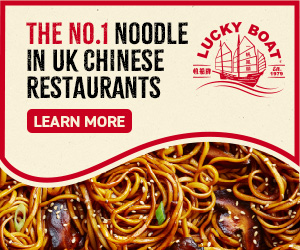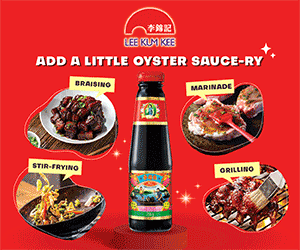Feature: Efishient business

With the world in environmental turmoil, restaurant operators have a responsibility to ensure their fish-based recipes are responsibly sourced and delicious
The world’s first fish supper took place around two million years ago. Cuts in an ancient crocodile foot bone, uncovered by archaeologists in 2010, demonstrate that our ancestors had a tase for aquatic beasts. Our ancient predecessors would gather on the shores of the Kenyan lake or river where said bone was found, collecting fish and other creatures from the shallow waters. Using tools crafted from stone, they would gut, debone and feast on the communal haul.
While today’s means of catching and consuming on an industrial scale would seem unimaginable to our forebears, the motive remains the same: fish are a low-fat, high-quality source of protein, rich in omega-3 fatty acids and essential vitamins that make them a central component of a healthy diet. And in the hands of the right chef, boy, do they taste good!
Thou shall have a fishy
We are a nation that loves a fish dinner. According to UK Fisheries, we eat more cod and haddock than any other country, with our hankering for fish and chips alone being enough to sustain some 10,500 dedicated outlets UK-wide, proving that this dish has earned its status as a British culinary institution. “Fish and chips is by far the favourite fish dish we serve, and anyone from Grimsby will claim that haddock is the only option when it comes to the golden Friday night staple,” says Charlotte Bennett, managing director of Grimsby’s Healing Manor – a 37-bedroom hotel, restaurant, pub and wedding venue. But our appetites extend far beyond the realms of batter and deep fat fryers, with restaurants from fine dining through to casual cooking seafood with flair and panache, and consistently placing these recipes among their hero dishes.
“Our chef-patron has a core understanding of texture and flavour and often pairs meat with fish,” adds Bennett. “We currently offer belly pork with monkfish scampi, turmeric-roasted cauliflower, mango and cucumber. We also serve scallops and black pudding, and smoked haddock with ham hock.”
For David Scott, head chef at Crabshakk in Glasgow, the best seafood concoctions are those that promise an element guests wouldn’t usually expect. “Growing up in a fishing family, I have always wondered how I could make a fish dish more appealing to everyone,” he explains. “I concluded that pairing fish and seafood with less classical garnishes and ingredients than seafood restaurants typically offer would bring more excitement to the plate. But the main difficulty has been not to overpower the delicate flavour of the dish.”
Diners want a ‘treat’ when eating out of home, says Martin Finegan, managing director of seafood supplier Pacific West, meaning they are often more willing to be adventurous with their menu choices. “The world food category is increasing in demand, and guests look to chefs to deliver their expertise on the plate,” he adds. “In line with this trend, flavour profiles such as Asian and Caribbean work brilliantly with seafood.”
At Shucks Seafood Bar & Restaurant, also in Glasgow, producing a top-notch fish dish isn’t just about the type of ingredients used, but also the method of cooking. “Barbecued turbot or halibut on the bone always flies out the door,” says head chef Shaun Haggerty. “It’s the best way to cook and eat these amazing flat fish.”
So, on the one plate, the enduring popularity of fish and chips shows that some customers like to stick to what they know, while the other plate encapsulates a growing consumer desire to branch out to flavours new. This is a win-win for operators, who can rest assured that one or two seafood staples, alongside a few more daring options, will allow them to satisfy fish-eating guests with whatever suits their fancy.
Responsible sourcing
Much like its meaty counterpart, the seafood industry is no stranger to controversy. The 2021 Netflix documentary Seaspiracy made waves (no pun intended) on social media. It alleged that the global fishing industry is driven by greed and deceit, exploring various critical issues impacting oceans worldwide, such as overfishing, ghost nets and pollution. It’s a shocking watch, and, while the film has since been criticised for lacking balance and citing outdated data (among other things), there’s no denying the damage caused by fishing so carelessly, and on such a colossal scale, for so long.

Belly pork with monkfish scampi, The Pig & Whistle, Healing Manor Hotel
“There are also serious welfare issues associated with fish farming, such as overcrowding, barren environments, periodical starving and inhumane slaughter methods,” says Dr Daniel Sanchez, fish welfare research manager of food business at Compassion in World Farming. “In aquaculture, many carnivorous species such as salmon are fed on wild-caught fish in the form of fish meal and fish oil. The fish meal industry itself accounts for 0.5–1 trillion fish out of the 0.79–2.3 trillion fish caught every year. This is inherently unsustainable, causing a global crisis in overfishing and depleting the feeding grounds for many species, including sea birds and marine mammals. The aggressive expansion of fish farming to cater for a higher demand will only exacerbate these issues.” It’s the very same narrative we’ve seen play out with agriculture and meat production industries. It would be unrealistic to suggest cutting out fish altogether, but it’s imperative that consumption, the issue of waste and the importance of ethical sourcing are prioritised.
“The benefits of sustainable seafood extend beyond our own health and nutritional advantages to the good of the planet,” says Simon Hulstone, chef and ambassador of the Norwegian Seafood Council (NSC). “Customers not only deserve to know where their seafood came from, they’re demanding it.”
There are plenty of open resources that can point both operators and consumers towards seafood that’s responsibly sourced. The Marine Conservation Society’s Good Fish Guide, for example, shows consumers and businesses the most sustainable seafood option via a simple traffic light system. Green equates to ‘Best Choice’, amber means ‘Okay to eat, but improvements are needed’, and red indicates ‘Fish to Avoid’. Schemes like this should play a fundamental role in the traceability process for operators, who should, at the very least, opt for fish that is certified. “These schemes aren’t perfect – most certifications refer to sustainability and are lacking in fish welfare, allowing for some regrettable production methods to persist – but they do provide good guidance,” advises Dr Sanchez.
When it comes to aquaculture certification, the RSPCA covers more welfare-related parameters, while schemes such as GlobalGAP, Friends of the Sea and the Aquaculture Stewardship Council (ASC) are looking to improve in this area. “Soil Association Organic Standards or Organic Food Federation can also be good references to guide fish acquisition,” adds Dr Sanchez.
To reassure the growing number of consumers who want to know the provenance of their food, establish a public fish welfare and sustainability policy and proudly display certifications on your menu. Featuring labels for wild caught fish, including place of origin, should help answer guests’ questions relating to traceability and welfare, allowing restaurateurs to communicate their brand’s standards and how fish is sourced. “Make sure that your front-of-house team is knowledgeable about when and where the fish has been caught so they can relay the information to customers,” Scott advises.
It’s not just your conscience that will get a kick from prioritising sustainable produce – your menu will benefit, too. “I genuinely believe the fish that has been responsibly sourced cooks and tastes better and is of higher quality,” says Haggerty. “I also one day want my grandchildren to be able to eat the same great fish I do!”
Seasonality and suppliers
Inherently tied to the matter of seafood sustainability is seasonality and suppliers. When it comes to the latter, find a reliable company whose values and goals align with your own and form a strong relationship with them. “We use suppliers we trust, who source sustainably caught or farmed fish from as close to Scotland as possible,” notes Haggerty. “I think building a close relationship with your fish suppliers is really important,” he adds. “We speak daily on all matters regarding provenance, supply, stock levels, everything really. This ensures we can explain to guests what great produce we have on each day and allows our team to promote what we’re all about.”
At Crabshakk, 95% of the menu is made up of British, mostly Scottish, seafood. The crabcakes, the restaurant’s most popular dish, comprise 95% Scottish crab claw meat from Uist, served with a homemade lemon mayonnaise and fresh, crisp salad. The team are advocates of ‘Sea the People’, a Scottish campaign led by chef Monica Galetti that encourages cooks and restaurant operators to feature more Scottish seafood from small businesses on menus. “With around 80% of Scottish seafood currently exported, we have a responsibility to introduce different species to consumers in a way that encourages them to look beyond the familiar,” urges Scott. “We use all varieties of wild fish – including those that are lesser known to the customers – alongside the best farmed products. Over the years, I’ve found that building a good and honest relationship with trusted suppliers is key to sourcing the best seafood. I also recommend that operators buy as much whole fish as possible in order to check the quality before it ends up filleted or out of the shell. Always keep an eye on what’s landed at fish markets directly or by asking your supplier.”

David Scott, head chef at Crabshakk, with Seafood From Scotland ambassador and celebrity chef, Monica Galetti
Healing Manor works with three fish merchants and producers, all of which are local to Grimsby. Dishes on the venue’s à la carte menu (which changes every six to eight weeks) are designed around what’s available both nearby and seasonally. “We work with Nathan, a local fishmonger, to ensure that we are sourcing seafood responsibly and seasonally, minimising our supply chain and environmental footprint,” says Bennett. “We understand the seasons of vegetables and some meat, but it’s different with fish. We have explored the psychology of this quite a lot to try and understand why this is. Perhaps with veg, it comes from the land so is more regularly seen, whereas fish is only ever really seen once it hits the shelves. We are supported by local seafood experts and the industry body Seafish, who source information on the seasonality of fish, ensuring our product is sustainable.”
Sticking to seasonal is the perfect way to expand your kitchen’s creative capabilities, but there are huge ecological perks as well. It enables fisheries to diversify their target species and to distribute the fishing impact more evenly throughout the marine ecosystem. It has recently been suggested that this more balanced approach to harvest could be key to mitigating the damaging effects of fishing, potentially even supporting truly sustainable fisheries.
The NSC points out that seasonal fish often comes cheaper and in abundance. Hulstone suggests that hosting ‘seafood special’ nights can be great for encouraging seasonal consumption, also allowing venues to showcase species and origin to diners. He comments: “I recently worked with Seafood from Norway on two gastropub events in Letchworth, Hertfordshire, showcasing the best sustainable seafood, and there was a 300-strong waiting list for the six-course tasting menu! There’s clearly a demand for it.”
Lots of restaurants are making use of cheaper species along with prime fish to boost sales, adds Hulstone. “This is a great way to use bycatch sustainable fish alongside the more expensive prime fish everyone recognises. And in terms of seasonality, dishes like bouillabaisse and fish stews are a great winter alternative to expensive meat and poultry dishes.”
Waste not, want not
UK restaurants throw away 199,100 tonnes of food waste every year, costing businesses £682m. These stats are troubling given our knowledge of the harm this causes our planet, but they sting even more knowing they are entirely preventable. From stopping scraps ending up in landfill to preserving precious natural resources and saving money, reducing the waste produced by your venue really is a no brainer. As Haggerty puts it: “Buy whole, use everything and cook on the bone where possible. This creates a better eat and ensures zero waste. For whole fish cuts, we carry out processes like making bottarga from the roe, sashimi or tartare from the belly depending on the fish, deep fry or BBQ the collars and use bones and shells in stocks and sauces.”
Reel 'em in
Out-of-home dining provides the ideal platform to inspire consumers with new fish species and recipes, also presenting a great opportunity to educate them on the benefits of sustainable options. Restaurant chefs and operators are instrumental in this process. You have the power to help your guests understand that their choices matter.















